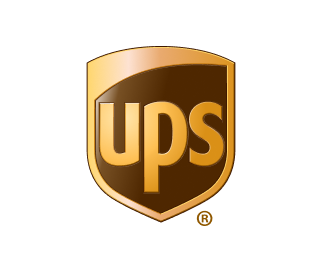ClickPost Returns Management Software
Stop losing 30% of your revenue
to terrible returns experiences
Automate your returns, slash processing time, and use AI-powered nudges to turn returns into exchanges. The result? Happier customers, more sales, and a healthier bottom line


With ClickPost’s real time tracking, customers receive timely updates, significantly reducing WISMO Queries and helping us improve our post purchase experience.
ClickPost’s team were experts in their systems and integrated seamlessly with ours. They proactively resolved every issue, ensuring a smooth experience.
Returns Killing Your Business?
Let ClickPost help you to breakout from the endless loop of messy returns


With ClickPost, Win With Exchanges
- Retain customers with hyper-personalized exchange nudges
- Boost Revenue with exchanges for size, colour, or style, right on your Shopify site
- Simplify reconciliation by automating exchange price variance adjustments
- Automate refunds, offer gift cards or discounts as alternates
- Gain flexibility, trigger refunds at your preferred RTO milestone
- Reduce queries by 60% with Real-time tracking for you and your customers
Your Policy, Your Way
Personalize your policy
Optimize for your business
Leading Carriers, Shopfronts, WMS, ERP, OMS












Returns and Exchange Resources
What features does ClickPost’s Returns & Exchanges Management Solution offer?
How does ClickPost improve customer experience during returns?
How does ClickPost reduce revenue loss from returns?
Can the returns portal be customized to match our brand?
Questions to Ask Before Choosing Your Returns Management Software
Smart questions lead to smarter decisions. Let’s start with the top 10.
1. How Easily Can the Software Integrate with Our Existing Systems?
Your tech stack is the backbone of your operations. A returns management software that doesn’t easily plug into your existing systems causes a domino effect: inventory blind spots, stuck parcels, and delays in refunds.
Therefore, before selecting the right platform, consider if it natively integrates with your storefronts, WMS, OMS, ERPs, payment gateways, CRM tool, and your carrier partners. This saves you from reworking your order, shipment, and inventory flows — and helps avoid silos and visibility gaps.
For example, when your customers initiate a return, the software instantly generates a pickup request or a return label. This streamlines the process for better customer experience and reduces the possibility of errors from manual oversight.
Action tips:
- Check the integrations page to see which platforms and tools are supported.
- Ask about the set-up process, latency, downtime record, API/webhook offerings.
- Avoid platforms without robust and fast custom integration support.
2. Does It Support a Wide Range of Return Methods (In-store, Pickup, Mail-in)?
Cross-brand partnerships, no-box/no-label returns, in-store drop-offs, and mail-ins are blending into a delicious cocktail—one that many retailers serve to win customer loyalty and make returns effortless.
Since 67% of customers consider one negative return experience reason enough to abandon a brand, return flexibility becomes key to retaining them. Different returns management software handle return methods differently. Some focus on concierge style returns. Some nail in-store returns and instant refunds. Some are pro at scheduling pickups with carriers and consolidating returns.
Action tips: No matter which return methods you offer, look out for the following non-negotiables-
- A self-serve portal where customers can easily choose their preferred return method.
- Display the nearest drop-off point or parcel locker, complete with geo-coordinates, to make returns more convenient.
- Automatic generation of shipping labels or QR codes for hassle-free mail-ins.
- Pre-built connections with multiple logistics partners and in-store systems like your POS software.
- Smart order routing to your warehouse or fulfillment center with intelligent carrier allocation.
3. Does the Software Handle Flexible and Customizable Return Policies?
Your return policy is often your brand’s true first impression as 80% of shoppers check it before deciding to buy. A friendly return policy encourages customers to make a confident purchase.
Whether you choose to offer free returns, issue refunds instantly, provide a flexible return window or charge a restocking fee, return management software can automatically enforce these policies. They cut out manual approvals and the need for emails and support calls.
Though most solutions let you automate your return policy through basic configurations, what retailers really need is true customization.
Action Tips: Evaluate if your preferred solution can-
- Personalize your policy such as setting up return restrictions, promoting gift-cards for refunds.
- Enable SKU exceptions with auto-approval/rejection.
- Adjust return duration (accommodating big sales/promotions) and prioritize rules.
- Offer nested return reasons, image validation, and customer’s note.
4. Can It Provide Real-Time Tracking and Notifications for Returns?
Customers crave real-time tracking and notifications, not just for the orders placed, but for returns too. With 84% of shoppers expecting faster refunds, many feel uneasy until they can see where their parcel is and when their refund will arrive. Therefore, the best returns management solution always proactively notify customers.
Like your customers, you’d also want to know where the return shipment is and make strategic calls like when to trigger refunds. For example, issue a refund at the time of the first scan or when the package reaches your warehouse.
Action Tips: A checklist for have a solid notification and tracking system:
- Both tracking API and webhook to enable live tracking updates with timestamps.
- Multichannel notifications with pre-built templates for easy set-up.
- Automated messages triggered at key milestones.
- Proactive exception alerts with standardized statuses and a central dashboard.
- Pre-built integrations with communication gateways and CRMs.
- Whitelabeled and branded tracking portal.
5. How Does the Software Improve Customer Experience Post-Purchase?
The post-purchase experience isn’t over once customers hit “Buy.” It’s just as critical when they hit “Return Your Order”. Many brand owners underestimate how far they fall short of customer expectations—even in critical areas like returns and delivery updates. According to a Deloitte study, 78% of retailers believe they offer proactive delivery communication, yet only 59% of customers feel the same.
Personalization forms the core of any post-purchase strategy built to improve customer experience. Building return policies specific to customer segmentation plays a big role in rewarding your loyal customers or bringing more into the fold, and deter unwanted behaviour like bracketing and other frauds. Astonishingly, 87% of customers over-order apparels and return those they don’t want, a nightmare for apparel brands.
The spread of LLM based models and GenAI has made AI-enabled personalization accessible and easy to implement.
Action Tips: Find out if the returns management platform offers-
- AI-enabled customer segmentation to tailor return policies.
- LLM-generated hyper-personalized and contextualized emails at scale.
- AI detector for preventing frauds or safeguards for return policy misuse.
- Proactive ETAs, language localization, and a branded return experience.
6. Can it Encourage Exchanges Over Refunds?
Exchanges aren’t just customer-friendly—they’re revenue-friendly. 60% of online customers prefer an exchange or store credit over a direct refund. This opens up the opportunity to nudge them toward alternatives that keep revenue in-house.
Your returns software should allow customers to browse an open catalog or a custom one for exchanges beyond simple size or color swaps. But here's the catch: not all platforms sync accurately with your live inventory or SKU logic, leading to mismatch issues and stockouts.
Exchanges can be bundled with upsells. A smart RMA flow can turn a return into an upgrade, not a loss. Likewise, while automating refunds sounds appealing, high-value items often require manual checks to prevent errors and fraud.
Action Tips: Look for the feasibility to-
- Set up multiple refund formats including store-credit, gift cards, discount codes.
- Trigger refunds at your preferred milestone.
- Enable site-wide exchanges along with automated price variance reconciliation.
- Combine manual refund checks with smart retries on transaction failure.
7. How Scalable Is the Returns Management System?
A returns management software is only as powerful as its ability to scale. While automation gets you started, it’s scalability that supports your growth. It should be able to keep up with your rising volume and operational complexity even 5 or 10 years down the line.
Action Tips: There are four main components to scalability and your returns management software should have them all to future proof your expansion-
- Handle surges like peak season sales or promotions without performance slowdown or outages.
- Fulfill customization needs, expand features quarterly, have faster product deployment.
- Support expansion to newer geographies and set up new currencies, payments, carriers with ease.
- Enable multiple users, secure log-ins; have robust data security measures, decentralized team access, and custom setups.
8. Does It Offer Advanced Reporting and Analytics?
As 68% of retailers plan to upgrade their return capabilities, most seek ways to lower their return rate. Imagine having access to customers’ return patterns, return reasons, total returns and exchange volume, returns-to-exchange ratios. Better yet, having unprecedented visibility, automated reports, customizable dashboards, and notifications for important metrics.
You can mine the data to easily identify bottlenecks and revenue leaks, plan for seasonal demands, detect recurring customer behaviors, create safeguards, check for inventory issues, redesign your exchange campaigns, and upgrade customer experience.
Action Tips:
- Look for platforms that give you a comprehensive breakdown of the causes and trends observed in your return data.
- Analyze based on SKU, customer segments, category, or tags on an interactive dashboard.
- Check the availability of predictive models that forecast return volumes or detect fraud patterns.
9. What Kind of Customer Support Does the Software Provider Offer?
If you are worried about not having active and timely customer support, you’re right to do so. Support right from the moment you plan to onboard with a platform pays well, especially in your product adoption, usage knowledge, and training. Aligning with your business objectives and building a successful plan requires successful cooperation for customer support teams.
A recent Bain survey found that only 65% of customers felt their post-sales needs were moderately or adequately addressed. You wouldn’t want to be in that position. Therefore, choose a returns management software that offers support across key areas: product deployment, technical implementation, integration needs, support ticket resolution, and product onboarding.
Action Tips:
- Look for live support via emails, calls, or chat.
- Ensure you get help articles and self-learning materials.
- Confirm that responsive support isn’t paywalled behind advanced subscriptions.
10. What Are the Costs and Pricing Models?
Most return management solutions offer pricing models in two ways: tiered systems or custom pricing. The one you choose would depend on your return volume and the features you opt for.
For example, if you are a Shopify start-up with 100 return orders, choosing a basic subscription plan or free plan like ClickPost’s Shopify Returns App would mostly suffice. But, if you are a fast-scaling business with a steady increase in returns, you may want to consider a fully automated system to derive ROI.
The tiered model allows you to browse different subscription bundles to choose the right one. But, with custom or granular pricing you can opt for features and pay as you use them.
Action Tips:
- Enquire about any charges if returns exceed your plan limit.
- Browse customer reviews to find if there are any hidden fees.
- Clarify if any features are add-ons, as this might incur more charges.
Common Returns Management Challenges and How Software Can Help?
Processing an ecommerce exchange or refund is much different than in store returns. From keeping tabs on the entire process, curating eligible returns, to ensuring the returns journey is convenient for customers, your team has a lot on their plate. By learning the significant challenges, you can implement smart solutions and offer better returns than competitors.
Top Key Returns Management Challenges
- Challenge No. 1: High Return Rates and Revenue Loss
- Challenge No. 2: Complex and Manual Returns Process
- Challenge No. 3: Lack of Real-Time Visibility in Returns
- Challenge No. 4: Return Fraud and Policy Abuse
- Challenge No. 5: Managing Cross-Border Returns
- Challenge No. 6: High Costs of Return Shipping
- Challenge No. 7: Complicated or Slow Return Process
- Challenge No. 8: Inefficient Restocking and Inventory Management
- Challenge No. 9: Lack of Integration with Other Business Systems
- Challenge No. 10: Difficulty in Analyzing Return Data for Insights
Challenge No. 1: High Return Rates and Revenue Loss
The first challenge in returns management process is high return rates. High return rates equal increased shipping costs and loss of potential revenue. Online retailers tend to experience more returns (especially in the electronics and fashion industry) than brick-and-mortar stores.
Solution:
Introducing automated returns management solutions can help you eliminate manual errors and maintain high accuracy. Also, make sure your sizing charts include clear measurements with multiple metric system labels. Further, enforce strict quality checks that are evaluated throughly before they leave the warehouse. If needed, you can even leverage software to enforce return policies, only accept returns that match your given criteria, and automate refund processing.
Challenge No. 2: Complex and Manual Returns Process
Adding to what we’ve said above, you must ensure that your returns are efficient right from the first step. Online retailers may only provide a support number that visitors have to contact to place a return order, hampering the average customer experience. Put simply, this is extremely time-consuming for both consumers and your support team.
Solution:
Using a smart digital solution, your team can set up a returns portal that lets customers initiate returns without contacting anyone. If needed, you can even automate multiple processes that are error-prone, such as generating return labels (post-order placement) and processing refunds.
Challenge No. 3: Lack of Real-Time Visibility in Returns
The anxiety of knowing a return’s status is not very different from ordering a product for the first time. Customers want to know where their product is in real time. Keeping them in the dark can lead them to become frustrated and place unimaginable amounts of WISMO calls.
Solution:
Having reverse management software enables you to set up a real-time tracking page that includes a parcel’s location information and all related updates. Additionally, you can send automated notifications at specific milestones and get a unified view of all returns (via a main dashboard) to manage them efficiently.
Challenge No. 4: Return Fraud and Policy Abuse
A massively growing modern returns management process challenge is the infamous wardrobing technique. Here, customers temporarily use an item with its tag on and return it within your policy’s period. This practice more common in the fashion industry, where resale value is vital. What this does is hamper your bottom line and let people abuse your return policy.
Solution:
With smart software, you can leverage AI-powered fraud detection algorithms to identify suspicious return patterns of specific consumers. Once you have precise customer data and learn know who’s exploiting your return policy, you can easily flag and prevent them from pulling another returns fraud.
Challenge No. 5: Managing Cross-Border Returns
As a thumb rule remember this, if you’re prepared to deliver products overseas, then be prepared to receive items from them. International returns aren’t like domestic orders where you hardly need any paperwork done. Customs, duties, and taxes can and will drain your company’s time and finances.
Solution:
Automated software from third party service providers can easily calculate all tax-related processing costs and assist you with filling out a CN22, CN23, or other customs forms. If possible, you may even be able to set up a local return center (similar to a fulfillment center) to efficiently organize all international returns.
Challenge No. 6: High Costs of Return Shipping
No one understands the costs of return shipping better than online store owners. Regardless of whether you’re delivering within your country or overseas, reverse logistics can quickly eat a chunk of your profits and hurt your overall revenue, resulting in major financial losses.
Solution:
To overcome rising shipping costs, you can leverage software to view and compare live carrier rates. In fact, some platforms may even provide extra discounts on specific courier partners, such as UPS and FedEx.
Challenge No. 7: Complicated or Slow Return Process
If your returns process is outdated and heavily relies on manual tasks for each step, expect high labor costs and a poor average customer experience. A quick return is one of the key steps to improving brand loyalty and encouraging repeat purchases.
Solution:
When your team uses digital returns solutions, they can automate various tasks that free up time and create workflows that lead to a hassle free returns process. Additionally, they can also send automated alerts during every step of the process to keep customers in the loop.
Challenge No. 8: Inefficient Restocking and Inventory Management
Whenever a product is returned back to your warehouse, it must be restocked and kept track of (considering the return was made due to incorrect sizing/color and not damage). However, without a smart system, you may not be able to update these records efficiently and end up with inventory management issues that hurt your reverse logistics supply chain.
Solution:
A robust returns management system will let you update inventory levels automatically whenever items are received at a warehouse. This can also include information on whether a product is resellable, or should be sent to waste/recycling/refurbishment process.
Challenge No. 9: Lack of Integration with Other Business Systems
Without integrations, sharing data across multiple platforms, such as warehouse management system (WMS), enterprise resource planning (ERP), and your shipping software can be daunting and waste precious time, leading to delays in future growth to connect with other software.
Solution:
A smart returns management system can typically connect with various platforms, enabling you to exchange data easily. Further, they integrate with reputed ecommerce platforms like Magento and Shopify, allowing you to sync return orders instantly.
Challenge No. 10: Difficulty in Analyzing Return Data for Insights
Manually keeping track of all your return orders using just the dashboard can make it difficult for your team to evaluate ongoing trends. Providing them with large spreadsheets of data results in them creating custom formulas, which can be time-consuming, especially if you want visualization, too.
Solution:
Returns management software gives detailed information on all your current return analytics. From reasons for placing orders, and overall processing costs involved, to monthly return rates, you can look up any data within seconds. Advanced returns software has the ability to predict future trends, display customer preferences, help you strategize your logistics in advance, minimize returns, and implement strategies that boost customer retention.
6 Essential Best Practices for Implementing Returns System
With returns management software, businesses can streamline their reverse logistics process. A returns software helps generate returns labels, performs quality checks, and eliminates errors. Here are a few of the returns management best practices for online stores -
1. Offer a Clear Returns Policy
A clear returns policy with returns rules can offer a great customer experience. It gives a solid understanding of how the company operates its returns operations and allows customers to become confident with the brand. For customers, trust is a major deciding factor. A clear returns policy can increase the number of repeat customers.
Also, according to certain regional compliances, it is compulsory to have a returns policy to ship products and carry out business operations. A brand that prioritizes a clear return policy can increase customer retention and improve brand loyalty.
2. Review Cost of Product Returns
Brands are required to assess each returned item to fetch costs. This helps them evaluate the total expenses in the reverse logistics process and make adjustments with speed and route optimization. The procedure can take time and manual intervention, costing businesses time and money. Reviewing the returned items through an automated returns software can get things done faster and smoother.
The software calculates the best prices & affordability for businesses to make informed decisions and manage their expenses accordingly. It also allows you to keep your customers informed. If possible, offer return shipping, even for in store returns. Providing online store credit can also keep costs coming back to you.
3. Analyze data from Returns
The best opportunity to learn about products and the customer standpoint is by addressing their pain points and their overall returns data. It can give you clarity about what you did right and what was wrong. To do that, you can also go through customer feedback and understand their responses. By going in-depth with returns, you are learning about the serial returners and customer behavior for those who have a habit of returning products.
Business owners can send promotional emails to these buyers and expect more purchases from their businesses, which works for brick and mortar stores as well. It can help normalise supply chains and is one of the best practices for implementing a returns management platform. This can also be a means of preventing returns fraud, ensuring better inventory control, and speeding up refund processing.
4. Offer a Self-service Returns Portal
A self-service portal is an integral offering of returns management software and another one of returns management best practices. It lets customers place return requests for quick pickups and refund/replacement initiation. The portal gives customers more confidence and allows them to select a window based on their availability for the pickup. By giving more control to customers, brands gain their trust and increase the number of repeat customers.
Unlike the traditional returns process, the self-serve returns portal reduces refund times and decreases “Where is my refund?” calls and queries. Also, customers may choose their preferred return methods, view previous interactions with the teams, and receive updates.
5. Provide Returns Tracking
Businesses offer visibility and transparency by providing tracking information to customers expecting their orders to be delivered. The same occurs when a return is initiated, and customers want to know the status of their return or refund process. To keep the process visible, brands use a software solution and send automatic notifications at different stages starting from returns initiation to the successful refund process.
Customers are much more satisfied when they can access returns-related information at their fingertips. Plus, it helps enterprises streamline their returns management supply chain.
6. Identify Ways to Prevent Returns
This is probably the best practice when adopting returns management software. As they say, prevention is better than cure, brands take it very seriously and try their best to prevent product returns in the first place. After studying and gathering enough about their customers, brands figure out ways to improve customers' experiences with their returns data. They set clear delivery expectations, provide easy exchange options, and offer purchase communication to reduce returns.
A brand that can operate its business effectively and efficiently with lesser returns gains a more competitive edge and enhances customer retention rates. That's where returns data plays a vital role in maintaining customer satisfaction when dealing with online purchases. Online retailers and ecommerce businesses often need to consider this in their reverse logistics returns management process.
6 eCommerce Return KPIs You Need to Track for Peak Profitability
Here are the top 6 return key performance indicators (KPIs) you must monitor periodically:
KPI #1: Return Rate (%)
The return rate indicates the percentage of products returned compared to the total products ordered within a specific period. Let’s say an e-commerce store sells 1000 items in a month, 50 of which are returned. In that case, the company’s return rate is 5%.
Formula: Return rate = Number of Returned Items Total Items Sold ✕ 100
Why It Matters:
-
A high return rate indicates product quality issues, poor packaging, misleading product descriptions, a lower customer retention rate, and erosion in customer satisfaction. All these can negatively impact the repeat purchase rate.
-
A spike in return rates may also signal return fraud and abuse, like wardrobing.
-
Monitoring return rates across categories and SKUs helps pinpoint areas of improvement and revamp the return strategy.
-
Higher return rates shrink total revenue and negatively impact customer lifetime value.
How to Improve:
-
Add high-quality images to help shoppers better understand the products. On the other hand, it’ll also attract more website traffic.
-
Provide detailed product descriptions to reduce returns. Ensure the product descriptions are clear, accurate, and comprehensive.
-
Enhance product descriptions with 3D images, 360-degree views, and AR previews to visualize the products better.
-
Incorporate shoppable videos and customer reviews for real-world references of the products. Example: Sephora and Birchbox.
-
Configure shipping policies and focus on identifying trends in return patterns to address common return reasons.
KPI #2: Refund Rate (%)
The refund rate is the percentage of the returned orders that resulted in refunds. For example, if you had 200 total returns, out of which 150 were refunded, your refund rate would be 75%.
Formula: Refund Rate = Number of Refunded Returns Total Returns ✕ 100
Why It Matters:
-
Higher refund rates mean deep product quality concerns, a decline in total revenue, and lower profitability.
-
Increases in the refund rate strain cash flow, complicate the payment process, and cause liquidity issues.
-
Refund-heavy returns can also erode customer lifetime value and lead to a decline in customer retention.
How to Improve:
-
Offer a one-click exchange option to avoid refunds.
-
Provide gift cards or store credits instead of cash. Encourage product exchanges with discounts to retain revenue.
-
Opt for a partial return option (like Amazon does) for returned items that show a sign of damage from the customer’s end.
KPI #3: Return Processing Time (TAT)
Return Processing Time (TAT) is the average timeframe taken to process an entire return lifecycle—from the moment a customer initiates a return to the refund or exchange. Different ecommerce businesses have different return processing times. For example, Kapiva (a holistic Ayurvedic brand) takes around 2–5 business days to process refunds after the return request is processed. Likewise, BeYours (a men’s clothing brand) takes 3–7 days to process refunds and exchanges.
Formula: Average Return Processing Time = (Return Completed Date - Return Initiated Date)Total Returns
Why It Matters:
-
A long processing time indicates poor business performance, increases the number of WISMR (Where-Is-My-Refund) calls, and negatively impacts the supply chain and customer experience in your e-commerce store.
-
Delayed processing leads to negative customer reviews, a decline in customer retention rate, and slow inventory management.
How to Improve:
-
Offer a self-serve returns portal to shoppers for streamlined request initiation.
-
Implement AI-powered systems for product quality and image inspection and return approval.
-
Partner with a carrier partner specialized in reverse logistics.
KPI #4: Cost Per Return ($)
Cost Per Return (CPR) or Return Spend shows the total cost associated with processing a return. The key cost factors considered for the total cost are shipping fees, handling costs, restocking costs, refund processing fees, etc.
Formula: Cost Per Return = Total Returns CostsTotal Returns Processed
Why It Matters:
-
Higher operational costs eat into profits and increase the operational budget.
-
High CPR hinders business growth, operational efficiency, and scalability when it’s not balanced against average order value and pricing strategies.
How to Improve:
-
Incur delivery charges in specific cases. Take the example of H&M. While all its in-store returns are free, it charges a flat fee of $3.99 if a customer returns an online purchase via mail.
-
Use multi-warehouse return routing to unlock significant cost savings.
-
Go for automated return workflows for your e-commerce store to cut down on manual labor costs related to return handling. On the other hand, it also improves the repeat purchase rate by enhancing the overall customer experience.
KPI #5: Exchange Rate (%)
The exchange rate shows how many returns have been converted to exchanges instead of refunds. Say an online business sees 1000 returns a month, and 500 of them are exchanges. So, its exchange rate will be 50%.
Formula: Exchange Rate = Exchanged OrdersTotal Returns ✕ 100
Why It Matters:
-
Lower exchange rates indicate fading loyalty and contribute to lost customers over time.
-
A higher exchange rate helps retain revenue, accelerates conversion rates, and even increases average order value through product upgrades, bundles, and the likelihood of repeat purchases.
-
A higher exchange rate also indicates solid return and marketing strategies.
How to Improve:
-
Offer a self-serve portal for easy exchanges and promote the “exchange-first” option.
-
Incentivize customers to choose exchanges over returns. This not only retains revenue but also creates positive impressions among them that attract new customers and encourage repeat business.
-
Immediately suggest personalized alternative products for exchanges.
-
Perform real-time inventory tracking to ensure exchange items are available and fulfill customer demands.
KPI #6: Non-Returnable Claims (%)
Non-returnable claims refer to the number of return requests that have been denied. It can happen for a variety of reasons, like return policy violations and fraudulent return attempts.
Formula: Non-Returnable Claims = Denied Requests Total Return Requests ✕ 100
Why It Matters:
-
This KPI helps identify the number of fraudulent returns, attract more customers, and track the behavior of repeat customers, ensuring that they adhere to the return policies.
-
It reduces operational costs by lowering unnecessary processing and return shipping.
-
This metric improves operational efficiency by encouraging customers to maintain policy and guidelines.
How to Improve:
-
Create a well-defined return policy, mentioning eligibility, time windows, and other conditions.
-
Block serial returners and wardrobers.
-
Implement an AI-powered fraud detection system to pinpoint fraudulent returns.
Key Feature to Look For in Returns Management Software
The features of return management software are the core ingredients that define its capabilities. Each feature is vital in streamlining the returns process and increasing business efficiency. They stand out for their specialty in helping businesses achieve business excellence. Here are the key features of returns management software.
1. Self service Returns Portal
A self-serve returns portal is a platform that allows customers to manage their returns without any involvement from the company. They can enter their email address or order number, choose the items to return, create a shipping label, and print it out at home.
The portal allows users to select the reason for returns and offer their feedback and concerns. It is also super easy to use, which goes a long way in maintaining positive customer relationships.
2. Returns Tracking
The returns management software allows brands to track their returns and offers complete visibility to answer WISMR (Where is my Return?) customer concerns and questions. It helps your customer support agents guide shoppers with each stage of the return process.
A returns management systems also enables them to collect data analytics on customer returns. Customer return data is regularly collected by return management solutions. It keeps records of items in the inventory to ensure stocks are ready to be shipped or received.
3. Integration Capabilities
Merchants look into the integration capability of returns management software to ensure its maximum capabilities. This means whether or not it seamlessly connects with other integral systems like CRM (Customer Relationship Management) or ERP (Enterprise Resource Planning). This can also mean it offers analytics and reporting capabilities.
This flexibility allows the smooth flow of information and data required for shipping ops. This makes it easier to process returns, initiate returns, and offer customers quick refunds or store credit. You can manage the entire returns process for you online store via a single dashboard, including analytics and reporting.
4. Quality Checks
Quality checks (QC) are essential components in the returns management process. Brands perform QC checks to ensure the product is in good condition when returned. Upon receiving the product, they determine its quality by examining it.
Quality checks are a corrective measure to give the product a pass if it meets the quality standards or to ensure it requires replacement or repair. This ensures a hassle free returns process for both businesses and the customer's experience.
5. Multi-currency Support
A returns management software has multi-currency support to facilitate payments in multiple currencies and allow users to process transactions from anywhere in the world. It can specifically help a customer planning to initiate an international return request.
Upon successful returns initiation, customers can receive payments in their preferred currency. The multi-currency advantage is a feature to watch out for while looking for returns software. This is a great feature to offer to ensure repeat purchases and increases the likelihood of returning customers opting for instant store credit.
6. User-friendly Interface
A user-friendly interface in reverse logistics software is a common criterion. Businesses want no customer to wait and get frustrated while navigating the self-serve portal. It creates a positive user experience if it is visually appealing and easy to use.
Returns management software that is straightforward and intuitive design attracts more customers, increases their use of the software, and brings them back. It not only makes for an efficient returns management process (which, again, is key to encouraging repeat purchases), it also actively enhances customer satisfaction.
7. Disposition Management
A vital factor that aligns with the capability of ecommerce returns management software is its disposition management functionality. It means how accurately it can get the returned items to its designated warehouse.
Businesses consider it because of its importance in saving them time and money, while also improvement inventory management. It helps them mark items for clearances and identify Return to Vendor (RTV) products for credit or refunds. With Disposition Management, brands take a call to send items for recycling or for direct disposal.
8. Multi-channel Support
With multi-channel support, business owners offer flexible return options to customers planning to return the products. It allows individuals to explore different convenient options according to their availability and time.
This can make a more efficient returns process and allow companies to invest in reverse logistics software. Also, having a multi-channel system can cut costs and increase customer loyalty to your brand.
9. Automated Communications
The two kinds of communication in the returns process involve interactions with internal teams and customer communications. Manually practicing both can be strenuous and time-consuming.
To run things faster, brands use ecommerce returns management software that automatically sends order-related information to customers and teams, keeping them in the loop. The tool sends notifications, emails, and updates to reduce customer queries and keep them informed throughout the order journey.
10. Barcode Scanning
Barcode scanning is a highly reliable feature that allows you to manage returned items and track inventory. Internal teams use it to fetch product details such as serial numbers, update the status, and retrieve stock data in real time.
One easy scan can reduce the time-consuming tasks of going back and forth with information. A good returns management software solution lets you track customer returns as effectively as you can track outgoing orders.
How to Automate Your eCommerce Product Returns Efficiently?
There are various features that you can integrate into your returns process by choosing a returns management software for your business. These features can further be customized to suit your return policy.
1. Placing Return Requests Online
To automate your returns process, you must first provide your customers with an easy-to-use portal to place their requests based on your return policy. You can also give them the option to exchange their product or get a refund for their order.
2. Interactive AI chatbots
Damaged goods cannot be adequately assessed in online requests. They could very well turn out to be liabilities to the seller, who will have to accept the return order after confirmation.
While returns management softwares cannot estimate the extent of damage, introducing interactive AI chatbots on your returns portal can help to pinpoint the nature of return requests and evaluate the damage. Furthermore, AI help desks provide faster responses to the customers and improve their buying experience by resolving queries and accepting return requests.
3. Automated Returns Inventory
Automated reverse logistics computerized the filing of return requests based on pre-set filters, improving the workflow and efficiency of the entire process. Finding a particular return request also becomes more accessible if a customer has a query regarding their product return.
4. Event-triggered Emails
One way to retain unhappy customers is by providing them with timely updates about their returns at each step. Automation of your ecommerce returns helps in sending emails triggered by specific events such as confirmation of the request, date of pickup, dispatch of the pickup partner, and refund initiation. These mails not only maintain transparency of your process but also keep your customers actively involved with your brand.
5. Using Returns Management Software
A Returns Management software, such as ClickPost Returns, integrates all the above features onto a single dashboard and can be merged with your returns management portal for a seamless experience.
Which is the best Returns Management Software?
Choosing the right returns software in 2025 can redefine how retailers handle reverse logistics, protect revenue, and deliver a smoother customer experience. The growing demand for efficient returns processes and the rising costs associated with returned items have made investing in specialized technology a necessity. Below is a curated list of the ten most powerful and reliable returns management systems available this year, helping brands of all sizes reduce costs, retain revenue, and elevate operational efficiency.
| Name | Nature | Pricing Info |
Key Features (in one line)
|
| ClickPost | Enterprise RMS | Custom | AI-powered automation, reverse logistics, and fraud detection |
| AfterShip Returns | eCommerce SaaS | Tiered (Free to Enterprise) | Custom returns portal, automated labels, analytics |
| ReturnGO | Mid-market SaaS | $121 to Custom | Store credit, branded portal, deep analytics |
| parcelLab | Post-purchase Platform | Custom | AI insights, WMS integration, personalization |
| Narvar | Premium Post-purchase | $65,000+/year | AI fraud prevention, branded UX, return policies |
| Loop Returns | Shopify-Focused SaaS | Flat-fee or Usage-based | Dynamic routing, refund incentives, and Return Bar integration |
| Happy Returns | Hybrid/Omnichannel | Volume-based | Box-free drop-off, Return Bars, exchange workflows |
| ReverseLogix | Enterprise Platform | Custom | WMS, OMS integration, fraud analytics, asset tracking |
| ReturnLogic | Small to Mid eCommerce | $300+/month | Auto RMAs, store credit, data dashboards |
| Return Rabbit | Shopify RMS | Free to $650/month | Visual dashboards, AI alerts, and return incentives |



